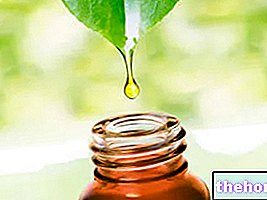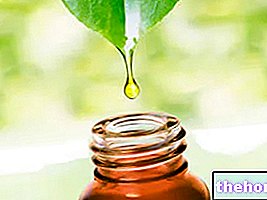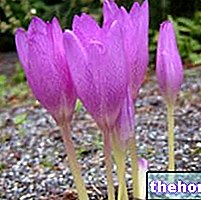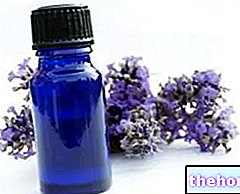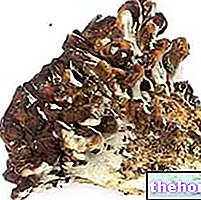
According to the supporters of aromatherapy, essential oils are capable of exercising polyvalent therapeutic activities and can influence all organic systems, with an action of strengthening vital functions; but alongside this non-specific activity of metabolic rebalancing there would be others, characteristic for their specific tropism towards an organ, a system or an apparatus.
PLEASE NOTE
The practices described here are not accepted by medical science, have not been subjected to sufficient experimental tests conducted with a scientific method or have not passed them. Such practices, therefore, could be ineffective or even dangerous to health. The information given here is for illustrative purposes only.
Alternative treatments cannot be understood as a substitute for traditional medicine.
For any doubts and for the treatment of any type of ailment or disease, it is necessary to consult your doctor before undergoing alternative treatments such as aromatherapy.
- acting individually or in synergy - they always determine a "global action that involves the organism at both physical and psychic levels."
Action on the digestive system
The gastrointestinal tract and related glands can be affected by essential oils. Their smell and taste reflexively stimulate, through the stimulation of the nerve endings of the gustatory (palate and tongue) and olfactory receptors (nasal mucosa), salivary, gastric and enteric secretions, improving the digestion process. When administered internally, essential oils also appear to act with a glandular mechanism, following a direct stimulation of the secreting gastric glands.
The essences are also attributed the following activities on the digestive system:
- Antispasmodic on smooth muscles (basil, bergamot, chamomile, cinnamon, cardamom, fennel, lavender, marjoram, lemon balm, peppermint, rosemary, sage);
- Antifermentative;
- Antacid (cloves);
- Carminative.
Furthermore, some essential oils are characterized by a singular tropism on the pancreas (eucalyptus, geranium, juniper) and on the liver (rosemary, juniper, lavender, chamomile, mint, cypress).
Please Note
Although some make use of it, the practice of taking essential oils orally - albeit in small quantities - should not be done before consulting your doctor, especially if you suffer from particular ailments or diseases, if you are in particular conditions (for example, pregnancy or breastfeeding - in these cases, the use of essences is contraindicated) or if you are undergoing drug therapies. In any case, even if you are not in any of the above conditions, the advice a doctor's quote should still be requested.
Action on the cardiovascular system
According to supporters of aromatherapy and the therapeutic-like potential of essential oils, the heart and blood vessels are also sensitive to the properties of the essences. Camphor essential oil should stimulate the heart muscle; while the essences of lemon balm, orange blossom, lavender, rosemary and ylang-ylang would slow down the excessively high heart rate (palpitations). According to some, essential oils would also be able to change the diameter of blood vessels inducing hypotension (hyssop, lavender, marjoram, garlic, lemon balm, sage, ylang-ylang) or hypertension (camphor, rosemary, cypress, thyme) with muscular mechanisms and / or nervous.
Action on the nervous system
Many essential oils appear to manifest a clear neurotropism towards the nervous system. Eg:
- The ability to exert a parasympathomimetic action is attributed to essences of oregano, rosemary, verbena and carnation;
- Essences of thyme, wildflower, hyssop, cypress and tarragon are attributed the ability to exercise a "parasympatholytic activity;
- To the essences of lavender, angelica and ylang-ylang is attributed the ability to exert a "sympatholytic action;
- A sympathomimetic action is attributed to the essences of savory, basil, pine and lemon.
In relation to the central nervous system, some authors divide essential oils into four basic classes:
- Convulsive essential oils (sage, tansy, thuja, wormwood, anise);
- Excitatory narcotic essential oils;
- Amazing essential oils (nutmeg, mint);
- Essential anticonvulsant oils (calamus, clary sage, lavender).
The group of excitatory-narcotic essential oils is in turn divided into:
- Mainly stimulating essences (basil, fennel, lemon, mint, sage, thyme);
- Mainly calming or sedative essences (chamomile, lavender, marjoram, lemon balm, verbena).
However, it must be remembered that the boundaries between sedative and stimulating action are never clear-cut, so much so that many essential oils show a calming activity in small doses and an exciting one for larger doses.
According to the supporters of the effects and properties of essential oils, if these substances influence the nervous system and the psychic state through the humor, an equal effect can be achieved through the sense of smell, exploiting the smell. In the posterior portion of the nasal cavity there are olfactory cells, ie nerve cells (olfactory neurons) that make up part of the olfactory mucosa. The chemical energy connected with the odorous stimulus is converted by the chemoreceptors into an electrical impulse which, flowing into the olfactory nerve, stimulates the olfactory centers of the thalamus, the bulb and the telencephalon. In this way the simple smell of essential oils is in able to condition the thymic state, ie mood swings, and the nervous system. Some authors have underlined the influence of the odorous characteristics of essences on the nervous system, verifying their calming (anxiolytic essential oils) and stimulating (antidepressant essential oils) properties even when they are administered by inhalation or by olfactory aspiration (sniffing). in this case, a real endonasal reflex-therapy, based on the stimulation of olfactory chemoreceptors by the odorous substances contained in essential oils.
Action on the endocrine system
According to those who practice aromatherapy, essential oils - regardless of the content of hormone-like substances, characteristic of some of them - would behave like plant hormones (phyto-hormones). Always present in the bloodstream in very low concentrations (the average dose per mouth is 2-5 drops, which diluted in 5 liters of blood gives a blood concentration of 10⁻⁵ M), they would reach specific tissues regulating their metabolic activity and growth, thus acting as important regulatory factors . Basil, pine, savory, thyme, geranium and rosemary seem to stimulate the adrenal cortex; while mint and jasmine would activate the secretion of pituitary hormones.
In any case, before taking essential oils internally, the importance of contacting your doctor in advance is reiterated.
Action on the immune system
Some essential oils are attributed with strengthening properties of the immune system. For example, the essences of bergamot, lavender, chamomile, thyme, pine, sandalwood are credited with the ability to stimulate the production of immune lymphocytes, making the body more ready to reject bacterial aggressions.
Action on the pulmonary system
Many essences are believed to be capable of exercising activity also on the respiratory system. In particular:
- Antiseptic and antispastic activity (essential oils of fennel, peppermint, thyme, sage, eucalyptus, lavender);
- Expectorant activity (essential oils of garlic, camphor, basil, eucalyptus, marjoram, oregano, savory, fennel, hyssop, mint, sandalwood);
- Stimulating activity of the respiratory acts (essential oil of camphor).
Action on the urinary system
Essential oils can be eliminated from the body through the skin, lungs and, above all, the kidneys. Many constituents of essential oils in the elimination phase seem capable of exerting a diuretic action (garlic, green anise, birch, chamomile, onion , cypress, juniper, eucalyptus, geranium, hyssop, lavender, lemon, rosemary, sandalwood, thyme); antilithiasis (chamomile, geranium, juniper, hyssop, fennel) and antiseptic. The diuretic action of essential oils can be the effect of an influence on the ultrafiltration process that occurs in the glomerulus, or - more likely - the consequence of a modest irritation of the renal epithelium induced by the constituents of the essence.
In any case, remember once again the importance of the consultation with your doctor before the internal use of essential oils.
which make them soluble in skin lipids, facilitating and speeding up their absorption.Taking some examples, the speed of absorption through the skin is 20 minutes for turpentine; 20-40 minutes for the thyme and eucalyptus; 40-60 minutes for the bergamot, lemon, anise and fennel; 6O-80 minutes for the geranium and cinnamon.
According to P. Rovesti, the essential oils of citrus fruits are absorbed in times ranging from 10 to 30 minutes in the presence of the massage. This property, according to those who practice and support the effectiveness of aromatherapy, can be exploited:
- To act on the deep organs and underlying the point of application;
- To convey other active substances (alkaloids, glucosides, etc.);
- To have systemic effects. In fact, once the skin barrier is overcome, the essential oil would propagate by diffusion in the extracellular liquids, to reach the blood and lymph. With the humoral transport they finally reach the tissues and the various organs, which retain the essential oils in relation to the tropism which is theirs.
- To obtain a bactericidal and / or bacteriostatic action. Many essential oils, in fact, have a high bactericidal and / or bacteriostatic power that could also be used for similar therapeutic purposes.
PLEASE NOTE
We remind you once again that the practices described here are not accepted by medical science and that, before resorting to the use of any type of essential oil, it is a good rule to contact your doctor. In fact, although of natural origin, similar products do not they are certainly free of side effects or contraindications.
To learn more, read also:
- Side Effects of Essential Oils
- Essential Oils: What they are and where they are found
- Purified and Activated essential oils
- How To Use Essential Oils
- Conservation of Essential Oils
- Aromatherapy
- Effects of Aromatherapy
The practices described here are not accepted by medical science, have not been subjected to experimental tests conducted with a scientific method or have not passed them. This information is for illustrative purposes only.
Select plant Fir Acacia Acerola Sorrel Yarrow Yarrow Yarrow Aconito Adatoda Garlic Agnocasto Agrimonia Alchemilla Alkekengi Aloe Altea Witch Hazel Ammi or Visnaga Pineapple Andrographis Anemone Pulsatilla Angelica Anise Star Anise Japanese Star Anise Bitter Orange Bitter Areca Arnica Harpagophytum Arpagophyte Artemisia Asteragus Basil Asparagus Asparagus Peruvian Asparagus Asparagus Asparagus Hawthorn Boldo Borage Shepherd's Purse Boswellia Bucco Butea superba Cocoa Coffee Cajeput Calamus Calamus Marigold Camedrio Chamomile Roman Chamomile Camphor Cinnamon Ceylon Maidenhair Capuchin Artichoke Cardamom Cardiac Thistle Asian Thistle Carvi Cascara Cassia Catecu Catha Cabbage Celandine Chicory Centaurea Cinnamon Cypress Celandine Chives Cypress Coca Cola Colchico Combreto Condurango Comfrey Coriander Cranberry Barberry American Chrysanthemum Cumin Turmeric Damiana Digital Dioscorea Drosera Dulcamara Dunalilella Echinacea Eder a Ephedra Elenio Eleutherococcus Helichrysum Evening primrose Horsetail Alfalfa Erica Euphrasia Erisimo Escolzia Eucalyptus Farfara Farfaraccio Calabar bean Fenugreek Fennel Phytolacca Frangola Ash Fumaria Japanese Mushrooms Galega Ganoderma lucidum Garcinia Cambogia Mulberry Gentian Broom Ginkgo Ginkgo Guipana Guipana Gynestra Ginkgo Hibelia Gymnasium Hibiscus Guarulp St. John's Wort Horse Chestnut Ispaghul Hyssop Jaborandi Kava kava Konjac Laminaria Cherry Laurel Lavender Lemongrass Lespedeza Lovage Icelandic Lichen Lemon Flax Lippia Licorice Lobelia Hops Maca Marjoram Maize Mallow Manna Marrubio Marrubio d "water Matè Melaleuca Meliloto American Lemon balm Myrtle Myrama Walnut Nutmeg Walnut vomica Olive tree Meadowsweet Ononide Opuntia Oregano Orthosiphon Nettle Poppy Papaya Parietaria Feverfew Passiflora Chilli Perilla Periwinkle Phyllanthus Plantain Picrorhiza Pilosella Pino Pisci dia Podofillo Polygala Grapefruit Parsley Psyllium Pueraria mirifica Butcher's broom Pygeum Quassia Oak Rhubarb Ratania Rauwolfia currant Castor bean Rhodiola Rosehip Rosemary Rue Willow Sarsaparilla Sage Elderberry Sassafras Sedum Ergot Senna Serenoa Repens Soybean Solidago Tansy Taraxus Tamarind Tamarind Tamarind Tamarind Tamarindo Ursina Valerian Vanilla Mullein Verbena Veronica Viburnum Vinca Pansy Mistletoe Vine Withania Yohimbe Saffron Ginger Pumpkin Select disease Juvenile Acne Rosacea Tinnitus Tinnitus Aerophagia Tendon Affections Afonia Aphthae Algias Functional Halitosis Breastfeeding Allergy Anemia Anguish Anxiety Arteriosclerosis Asthrosis Asthrosis Arthritis Arthritis Men Sex Woman Blepharitis and Conjunctivitis Eye bags Bronchitis Gallstones Kidney stones Salivary stones Baldness Androgenetic Candida Fragile hair Caries Headache Cellulitis Motion sickness Cystitis C limaterio Cholecystopathy High cholesterol Ulcerative colitis Colonoscopy Contusions Hematoma Convalescence Couperose Depression Dermatitis Diaper dermatitis Diabetes Diarrhea Erectile dysfunction Dyslipidemia Dysmenorrhea Dyspepsia Disturbances of vision Hemorrhoids Epistaxis Herethism Heart disease Fever Fibromyalgia Gastro-intestinal disease Flatulence Hypertension Fibromyalgia Gastrointomnia Jaundice Laryngitis Renal lithiasis Toothache Sore throat Thinness Menopause Meteorism Mononucleosis Alzheimer's disease Crohn's disease Nausea Vomiting Obesity Dark circles Onychomycosis Osteoporosis Dry skin Periarthritis Piorea Low pressure Prostatitis Psoriasis Colds Breast fissures Anal fissures Gastro-nasal rhinitis Senescence Premenstrual Syndrome Sinusitis Quit smoking Overweight Fatty liver Constipation Stomatitis Stress Cough Triglycerides high Ulcer Burns Nails Brittle flashes Heat Warts Dizziness Properties herbal Tanning Abortive adaptogenic Aphrodisiac bittering analgesic anesthetic anorectics analgesic antacid anti-allergic anti-asthmatic Antibiotic catarrh Anticellulitiche anticonvulsant Antidiaforetiche antidiarrheal edematous anthelmintic antiemetic Antiemorroidarie antiphlogistic Antiidrotiche Antinevrotiche Antioxidants antipyretic antirheumatic antiscorbutic Antiseptic antispasmodic anti-uric Aperitive Flavoring Astringent Balsamic Bechiche Capillarotrope Cardiotonic Carminative Cathartic Caustics Healing Cholagogues Choleretic Dyes Decongestants Deodorants Purifying Diaphoretic Cleansers Disinfectants Detoxifiers Thirst quenching Diuretics Exciting Emetics Emmenagogues Emollients Hemostatic Energies Hepatoprotectors Expectorants Eupepticus Moisturisers Galactosensitizers lanti Hypertensive Hypnotic Hypoglycemic Hypotensive Irritants Laxatives Soothing Narcotic Nerves Nutrients Odontalgic Pectoral Purgative Revulsive Remineralizing Refreshing Rubefacient Scialagoghe Sedative Soporifugas Sneezing Stomachic Stomatics Narcotic Vascular Tightenitis
